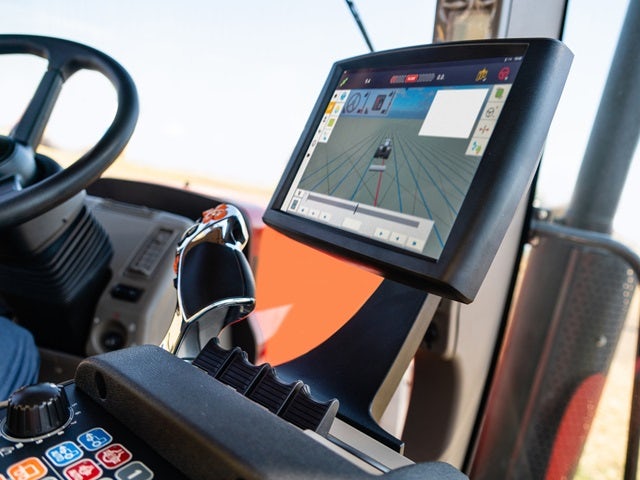Eliminate risks while remaining compliant with MBSE
A global mandate for sustainability calls for equipment innovation and electrification, which also increases product complexity. To keep up during development, manufacturers must promote dynamic collaboration between all stakeholders, including suppliers. When adopting an MBSE approach, everyone is integrated within a single environment, fully focused on the common goals.
Optimize your development and execution
Foster an environment where a defined architecture leads to informed decisions to improve product reliability and drive better efficiencies throughout the organization. Take control of your heavy equipment design process with fully integrated solutions.
Incremental savings
Once companies move to become Model-Based Enterprises (MBE), they see an additional 20-40% savings, resulting in total savings between 70 and 80%. (Deloitte)
Gain a competitive edge
Industrials that put more effort into digital are four times more likely to outperform the competition. (Bain and Company)
OEMs with cloud technology
Portion of acquisitions by machinery OEMs that have distinct capabilities in software or cloud technology; up from less than 20% 10 years ago. (Bain and Company)
Integrate domains and suppliers with MBSE
Efficiently and securely integrate domains and suppliers while eliminating the risk of discovering problems late in the process.
Align all equipment development stakeholders on the common goals with an integrated product architecture. Define how a variety of subsystems will interact with each other. Easily recover sub-system model descriptions from earlier development programs or from suppliers.
With multi-domain product development you can:
- Integrate all stakeholders from the start
- Improve requirement quality
- Manage traceable requirements from bid to build
Optimize and validate activities for all stakeholders simultaneously with system of systems design. Ensure all stakeholders understand what is changing and how it affects them. Deploy a next-generation approach to design next-generation solutions.
With change management and workflow tools, you can:
- Master complex multidisciplinary design
- Orchestrate the equipment development program
- Accelerate innovation easier and at scale
Synchronize all data that comes from the various stakeholders, including suppliers, to create and manage a single, accurate bill of materials (BOM). Leverage external know-how without introducing risk.
With supplier collaboration you can:
- Deploy a single source of truth
- Drive decisions throughout your extended enterprise
- Be the orchestrator of all activities that happen in the context of your systems development program.
Improve production with MBSE
New design ideas
Once started, supplier collaboration can evolve almost imperceptibly into supplier innovation, where joint efforts to refine a component may lead to the generation of entirely new design ideas. (McKinsey & Company)
Full traceability
A collaborative environment mitigates cost and schedule impacts by helping stakeholders fully understand the consequences of changes by providing full traceability across domains and all elements of a system. (Deloitte)
Competitive advantage
Disruptors already know the benefits of model-based enterprise (MBE) capabilities. They’re unconstrained by legacy thinking, processes, and systems and have adopted a fully model-based approach. (Deloitte)
In many cases, stakeholders understand system decomposition differently due to their siloed perspectives, resulting in unnecessary confusion and conflicts that can be mitigated if the synthesis of the system is captured in an authoritative location with traceable rationales.
Integrate architecture and system-of-systems design
Discover the key elements to take the next step in your digitalization journey by embracing an MBSE approach for heavy equipment product development. Work systematically and requirements-driven on complex products that are increasingly connected to their environment, streamline collaboration with partners and suppliers, improve overall quality and sustainability, and ultimately reduce risk.

Heavy equipment solutions
PLM model based systems engineering
E/E systems engineering
Product requirements engineering
Cloud SaaS product lifecycle management
Sourcing and supplier integration
Mechanical product design
Frequently asked questions
What are the greatest benefits of model-based systems engineering for heavy equipment companies?
MBSE helps heavy equipment manufacturers work systematically, continuously focused on the requirements, starting from a clear architecture with well-defined interfaces, so everyone understands their role in the wider picture, avoiding surprises at the integration gateways. This approach also helps them drive collaboration between all product development stakeholders, including partners and suppliers. When connected through MBSE, everyone works based on shared, up-to-date information. This automatically leads to higher efficiency, reduced risk of mistakes, and improved product quality. An MBSE approach also presents direct opportunities to work on aspects like reliability, availability, maintainability and safety (RAMS), as well as sustainability. Its advantages go beyond individual development programs. MBSE also helps you share model-based descriptions of systems and subsystems across product groups and capture best practices that ultimately promote the reuse of systems and concepts across development programs, while driving standardization. This makes you more efficient as an organization, ultimately reducing time-to-market and innovating faster.
What is the difference between PLM and MBSE?
If you want to embrace an MBSE approach as an organization, you need a product lifecycle management (PLM) system to facilitate that. But the goal of MBSE is not only to track every individual product throughout its entire useful life, as a PLM system does. With MBSE, you can focus on the interaction between subsystems at their interfaces, making sure you won’t have individual stakeholders introduce mistakes that are expensive to fix when they surface later in the development process. MBSE also takes things more globally, on the level of your organization. You can look for opportunities to improve quality and reliability and reduce cost across programs – not just for every individual product. This can be achieved by capturing best practices, standardizing processes, and focusing on commonality and reuse.
What is the difference between model-based engineering vs model-based systems engineering?
Model-based engineering (MBE) refers to adopting a simulation-based approach to design and refining products or components. With model-based systems engineering (MBSE), you also focus on the integration of subsystems in the overall product, problems that may be introduced at the interfaces, and on the interaction between systems and their surroundings. Looking at your design and engineering problem from a systems perspective rather than just by simulation is important when you design today’s innovative heavy equipment with a combination of multiple disciplines. Mechanics, electrical and electronic systems, and software are often connected to other systems in their surroundings. During heavy equipment design and engineering, the work of many different teams must come together at some point which is where mistakes are easily introduced such as misalignment, wrong data, and more.
Why should heavy equipment manufacturers consider MBSE?
To deliver innovative heavy equipment, MBSE has become indispensable as product design is the collective work of many departments. When you combine mechanics with electrical and electronics systems and software to the extent your customers expect today, deploying an industry-proven thorough digitalization of your processes is the only way to stay competitive. Otherwise, you will never be able to master the complexity that complex equipment brings, let alone consider all the interactions your machine has with other systems in its surroundings. Making changes at the core of what you are doing is challenging and can initially add to everyone's workloads. But this investment is necessary at your pace, and on the scale of your capabilities and needs. The best place to start is with a maturity assessment in collaboration with a dedicated and experienced partner, followed by jointly defining and implementing your unique digital road map. This approach will address your most pressing challenges and align with your strategy for maximum benefits.
